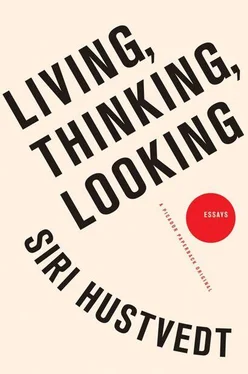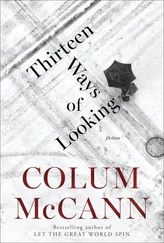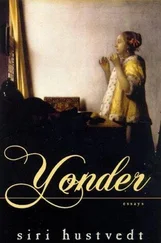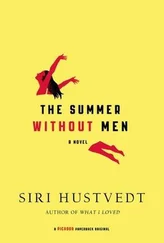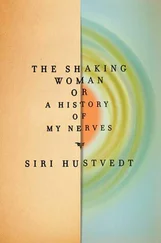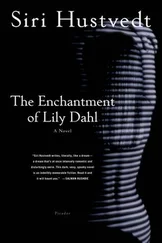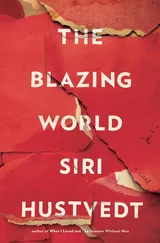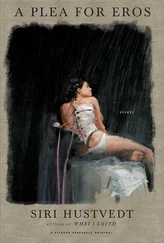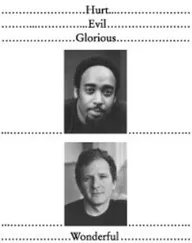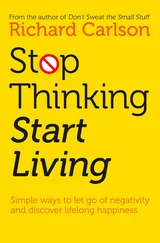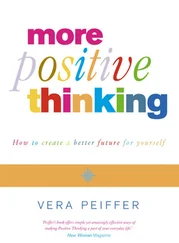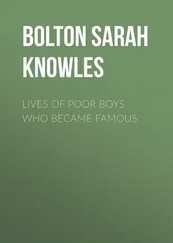A lot of research has been done on visual perception. Scientists have isolated cells in particular areas of the seeing parts of the brain that serve special functions — the recognition of verticality, color, and motion, for example — but mysteries remain. Philosophers, neuroscientists, and cognitive scientists argue madly over “the binding problem”—how an object can appear whole and unified to us when each of its features is channeled through disparate networks in the brain. Qualia — the subjective experiences of things — are just as controversial. I don’t see a consensus coming any time soon. Migraine auras of light, color, black holes and fogs, of high feeling and dread, and of peculiar little creatures that run or dance or just amble about, occupy a special place in the medical literature. They are anomalies, no doubt, tics of the nervous system that affect some, not all, but they could well help explain more general human qualities — who we are, what we feel, and how we see. I suspect that everyone has a few Lilliputians in hiding. It may be just a question of whether they pop out or not.
2008
PLAYING, WILD THOUGHTS, AND A NOVEL’S UNDERGROUND
PSYCHOANALYSIS PROPOSES THAT WE ARE strangers to ourselves. There were precursors to Freud’s idea of a psychic unconscious in both philosophy and science. Schopenhauer and Nietzsche each had a version of it, as did the scientists William Benjamin Carpenter in nineteenth-century England and Gustav Fechner and Hermann von Helmholtz in Germany. All of them believed that much of what we are is hidden from us, not only our automatic biological processes but also memories, thoughts, and ideas. Pierre Janet, Jean-Martin Charcot’s younger colleague at the Salpêtrière Hospital in Paris, pursued a psychobiological notion of the self. Ideas, he argued, can split off from consciousness, travel elsewhere, and appear as hysterical symptoms. Theories never bloom in nothingness. What is certain is that Sigmund Freud and his followers, both the faithful and the revisionist, have altered the way we think of ourselves. But the question here is about the novel. Has psychoanalysis changed the novel? Does putting a psychoanalyst in a novel affect its form, its sense of time, its essence?
The novel is a chameleon. That is its glory as a genre. It can be an enormous waddling monster or a fast, lean sprite. It can take everything in or leave most things out. It is Tolstoy and Beckett. There are no rules for writing novels. Those who believe there are rules are pedants and poseurs and do not deserve a minute of our time. Modes of writing and various schools come and go: Grub Street, Naturalism, the nouveau roman, magical realism. The novel remains. The modern novel was born a hybrid, to borrow the Russian theorist M. M. Bakhtin’s word for the genre’s mingling, contradictory voices that shout and murmur from every level and corner of society. When psychoanalysis appeared on the horizon, the novel welcomed it into itself as it welcomes all discourses.
When the “I” of the book is an analyst, does it fundamentally alter the way the novel works? Laurence Sterne’s Tristram Shandy (1759) has a structure far more radical and, I would say, more akin to the associative workings of the human mind and memory, than Simone de Beauvoir’s far more conventional book The Mandarins (1954), which has a narrating analyst, Anne. But to address this question, I cannot remain outside it, looking down at it from a third-person view. In life there is no omniscient narrator. Making a work of fiction is playing, playing in deadly earnest, perhaps, but playing nevertheless. D. W. Winnicott, the English psychoanalyst and pediatrician, argued that play is universal, part of every human being’s creativity and the source of a meaningful life. Making art is a form of play.
In fact, I have discovered that a novel can be written only in play: an open, relaxed, responsive, permissive state of being that allows a work to grow freely. The Sorrows of an American was generated by an unbidden mental image that came to me while I was daydreaming. In a room that looked very much like the tiny living room in my grandparents’ farmhouse, I saw a table. On the table was an open coffin, and in the coffin lay a girl. Then, as I watched, she sat up. My father was dying then, and despite the familiar setting — my father grew up in that house — and the undisguised wish to wake the dead that must have been at the heart of the fantasy, I did not interpret it. Not long afterwards, my father died. There are no miracles in the book, but the farmhouse is there, and a girl child who wakes up, and all through it the dead return to the living. Sections of the book came directly from a memoir my father had written at the end of his life for his family and friends. I now know I used those passages as a way to revive him, if only as a ghost.
And where did my storyteller come from, my forty-seven-year-old, divorced, lonely, grieving psychiatrist/psychoanalyst, Erik Davidsen? Some time in the early eighties, I saw a drawing by Willem de Kooning called “Self-Portrait with Imaginary Brother” at the Whitney Museum in New York. I love de Kooning’s work, but in this case it was the artist’s title that hit me. As one of four sisters, I knew this was the only kind of brother I could ever have. After I finished my Ph.D. in 1986, I considered training to earn my living as a psychoanalyst, but I was too poor for more schooling. Nevertheless, when I began writing the story, my imaginary brother-analyst-self was waiting for me. And I began to play.
The truth about unconscious processes is that the book can know more than the writer knows, a knowing that comes in part from the body, rising up from a preverbal, rhythmic, motor place in the self, what Maurice Merleau-Ponty called schéma corporel . When I cannot find words, a walk helps. My feet jog the sentence loose from that secret underground. Images lurk in that cellar, too, along with half-formed phrases, and whole sentences that belong to no one. Wilfred Bion, an English psychoanalyst, said, “If a thought without a thinker comes along, it may be what is a stray thought, or it could be a thought with the owner’s name and address upon it, or it could be a ‘wild thought.’” 1Sometimes when I’m writing, wild thoughts appear. They fly ahead of me. I have to run after them to understand what is happening.
I discovered the novel’s music as I went along, as well as its gaps and silences. There are always things that are unsaid — significant holes. I was aware that I was writing about memory. Freud’s notion of Nachträglichkeit haunted the book. We remember, and we tell ourselves a story, but the meanings of what we remember are reconfigured over time. Memory and imagination cannot be separated. Remembering is always also a form of imagining. And yet some memories remain outside sequence, story, and felt human time: the involuntary flashbacks of trauma. These timeless bits and pieces of images and sensory shocks subvert and interrupt narration. They resist plot. The real secrets of this particular novel are not revealed through the plot. Many of them never come to light at all.
Surely, what I have learned about psychoanalysis over the years has shaped my work, because it has altered my thoughts, both wild and tame. But so have philosophy, linguistics, neurobiology, paintings, poems, and other novels, not to speak of my lived experiences, both remembered and forgotten. As Winnicott knew, long before there was psychoanalysis, there was play.
2009
1. FAILING TO FALL
THE NARRATOR OF CHAUCER’S POEM The Book of the Duchess cannot sleep. As his fitful thoughts come and go, he lies awake. He hasn’t slept for so long, he fears he may die of insomnia. But what is the reason for his sleeplessness? “Myselven can not telle why,” 1he says. The English expression “to fall asleep” is apt because the transition between waking and sleeping is a gradual drop from one state of being into another, a giving up of full self-consciousness for unconsciousness or for the altered consciousness of dreams. Except in cases of exhaustion or with the aid of drugs, the movement from one world to another is not instantaneous; it takes a little time. Full waking self-consciousness begins to loosen and unravel.
Читать дальше
